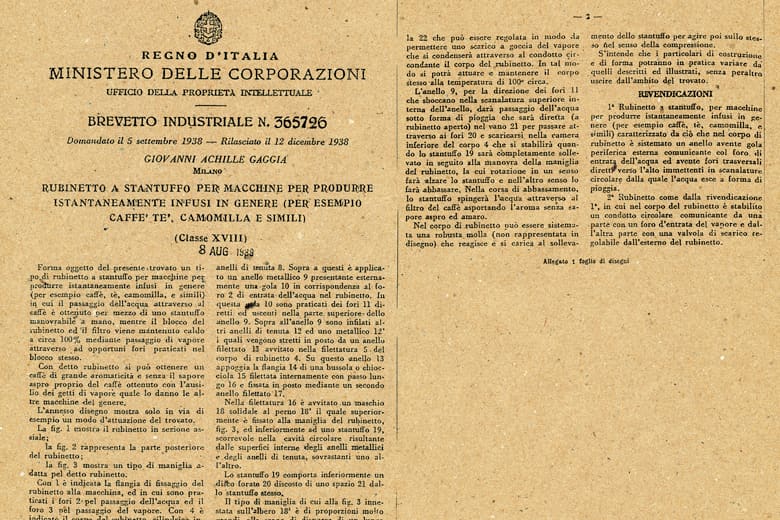
Our History
It was one man’s quest for the perfect espresso in 1930s Milan that gave birth to one of Italy’s most iconic brands. For more than half a century, Gaggia has been supplying both coffee bars and homes with innovative, state-of-the-art coffee machines. Year after year, Gaggia created beautiful, timeless products inspired by fashion, design, and culture of the day, as well as the Italian passion for “La Dolce Vita,” or, the sweet life. From the unique “crema naturale” layer to the crème de la crème of espresso machines, discover more about our rich history here.
It was one man’s quest for the perfect espresso in 1930s Milan that gave birth to one of Italy’s most iconic brands. For more than half a century, Gaggia has been supplying both coffee bars and homes with innovative, state-of-the-art coffee machines. Year after year, Gaggia created beautiful, timeless products inspired by fashion, design, and culture of the day, as well as the Italian passion for “La Dolce Vita,” or, the sweet life. From the unique “crema naturale” layer to the crème de la crème of espresso machines, discover more about our rich history here.
1930
Working at his family’s coffee bar, Caffè Achille in viale Premuda (Milan), Achille Gaggia comes to understand that clients’ preferences were changing and that it became necessary to improve the entire coffee extraction process, searching for a better flavor and look of the in-cup result. At that time, coffee is so bitter that Achille used to say it was similar to “walking into a foggy Milan.” He begins to work day after day in the bar’s warehouse, studying and experimenting new extraction processes and searching for the perfect espresso.


1936
Thanks to meeting with the engineer Antonio Cremonese, who shared his desire to improve coffee extraction, Achille is able to refine his studies and invents the “a torchio” system (later renamed “Lampo”). This device abandons the use of steam and, with it, baristas are able to accurately control the process by which hot water under pressure passed through ground coffee.
1938
On Sept. 5, 1938, Achille files the patent no. 365726 for Lampo. This mechanism uses hot water pressure instead of steam and prepared a delicious espresso, characterized by a soft layer of “crema naturale.” A true revolution! This moment marks the beginning of the modern era of espresso.


1939
To promote the new dispensing group for coffee crema, Gaggia exhibits Lampo at the 1939 Fiera Campionaria (Samples Fair) in Milan. Achille aims to sell the new groups to the bars owners, to substitute the ones on old coffee machines. Unfortunately, the idea is not easy to implement; the only solution is to produce coffee machines that already carried that innovative system.
1947
Achille Gaggia registers his second patent: a lever-piston brewing mechanism. This idea came to mind after seeing the piston engine of an American Army’s jeep that used a hydraulic system. The new patent applies a spring, loaded by a lever, that pushes the piston through the filter. In this way, hot water at high pressure passes through ground coffee, extracting all its marvelous aromas. The barista can now obtain a creamy and flavorful espresso in just 25-30 seconds. Mass production of the patent is just around the corner.


1948
Achille Gaggia, in collaboration with the entrepreneur Carlo Ernesto Valente, founds Officine Faema Brevetti Gaggia and produces his first espresso machine: Tipo Classica. It is a technological and aesthetic revolution: horizontally developed, with beautiful levers, unmistakable slogan and logo, and a shape that allows more than one group in a row. With this technology, the barista becomes a real artist.
1949
The Gaggia espresso is unique: the patented mechanism extracts the natural coffee oils and makes a delicious creamy layer on the top of the drink. Soon Achille Gaggia installs his machines in the most elegant Milanese bars, such as Motta and Biffi, with signs their windows that read “Crema caffè di caffè naturale.” The trend of espresso begins.


1950
Supported by the engineer Armando Migliorini, Achille designs and produces various ranges such as mod. Esportazione, Internazionale, Spagna and Treno, all characterized by elegant lines and impactful design. For the first time, the barista faces the clients while preparing espresso, and the back of the machines represents a new way to communicate with customers. Achille takes this opportunity to communicate with customers and is the first to place his unique slogan, “Crema caffè naturale - Funziona senza vapore.,” on the backs of those machines.
1952
After various studies focused on a way to offer the same espresso of coffee bars in the comfort of the home, Gaggia launches its first coffee machine for domestic use: Gilda. Entirely and meticulously handcrafted, activated by piston pressure, it owes its name to Rita Hayworth’s iconic interpretation of “Gilda” (1946). After this model, comes the variation Tipo-Iris and the famous and unforgettable Tipo-Gilda 54, named Rabbit’s Ears.


1955
The worldwide diffusion of espresso machines begins. At the famous Moka Bar, opened by famous Italian actress Gina Lollobrigida and first espresso bar of London, as well as other coffee bars like Bar Italia, Sirocci Bar, El Cubano, and The French House, Gaggia machines gleam on counters and serve 1000 people a day. The innovative “espressos with crema naturale” and cappuccinos delight young people, as well as the most known writers, authors, and actors.
1956
Gaggia rises in popularity. The Danish catering company Oluf Brønnum creates a Mobile Canteen with the exact same shape of Gaggia's Tipo Internazionale.


1957
Thanks to many emigrating Italians, espresso culture reaches Africa, America, and Australia. In Milan, Gaggia launches Tipo-America, designed to perfect the efficiency of the lever system. Later comes Autono-Matic with revolutionary hydraulically operating groups that gradually substituted the lever, making the brewing of espresso easier.
1961
Achille Gaggia dies prematurely and management passes to his son Camillo and to business partner Armando Migliorini.


1962
The great success achieved by the company leads to the decision to transfer production to larger buildings in an effort to answer growing worldwide need. Gaggia S.p.A. opens in Robecco Sul Naviglio (Milan).
1968
Design and research on materials becomes more important. Gaggia collaborates with designers, experimenting with lines and combinations. The first project of this kind is Tel 70, created with Giuseppe de Gotzen. It was available in different colors, with a die-cast Silumin bodywork, a horizontal heat exchanger and two shells crossed by a neon tube. Another collaboration with de Gotzen was for Modello 80 launches in 1975.


1977
Gaggia’s desire to become a household staple grows, and their mission to bring coffee house espresso to the home begins. The first model to be launched is Duo, but it was with the unforgettable Baby Gaggia that the dream becomes reality. Developed with Japanese designer Makio Hasuike, it is the very first espresso machine to be mass produced. With a unique compact design and high quality espresso, Baby Gaggia immediately enters the homes and hearts of Italians, becoming an instant must-have.
1980
The 80’s: the years of bright colors, multiple aesthetic innovations, and plastic. The ductility of this material leads to experiments with new shapes-colors combinations. Gaggia launches Baby Re-design, Espresso, Gran Gaggia, Dandy, and Fantastico, all for domestic use. Gaggia's sights are squarely aimed on becoming the leader of this new market.


1991
Gaggia presents the Gaggia Classic to the market. Characterized by a stainless steel body and bold lines, this domestic espresso machine perfectly combines Gaggia’s long professional tradition with a timeless design. Beloved all over the world since the beginning, Classic becomes a best selling symbol of the brand’s tradition, reliability, and quality.
1993
From this year, until 1998, Gaggia focuses on enriching the product range and works with various designers and architects to launch new models, all characterized by innovative aesthetics. Gaggia launches the manual machines Paros and Carezza, as well as its first automatic espresso machine, Automatica Gaggia.


1999
When the majority share of the group is acquired by Saeco, Gaggia refeines its offer of fully automatic espresso machines. The company launches Syncrony Digital, Syncrony Logic, Titanium, and Platinum. The new era of domestic machines begins: at the push of a button, it automatically grinds, tamps, and brews an espresso directly into the cup!
2007
The Gaggia’s production site moves from Robecco sul Naviglio (Milan) to Gaggio Montano (Bologna), to the Saeco International HQ.


2009
Another era starts when the majority share of Gaggia is sold, together with Saeco Group, to Royal Philips Electronics. The Dutch multinational recognizes the company’s potential and makes considerable investments to develop the brand.
2013
On the 75th Anniversary of Achille Gaggia’s patent, the Group renovates the product range and revamps the brand, aiming to strengthen Gaggia’s competitive position in the market of domestic espresso machines. There is a come back to the historic logo GAGGIA MILANO that underlines the strong bond with tradition and the company’s values and hometown. In the years to follow, Gaggia launches various new product ranges.


2018
80 years after the filing of the famous patent, Gaggia continues to work passionately to honor the unique tradition of Italian espresso and bring coffee bar quality espresso to the home.


